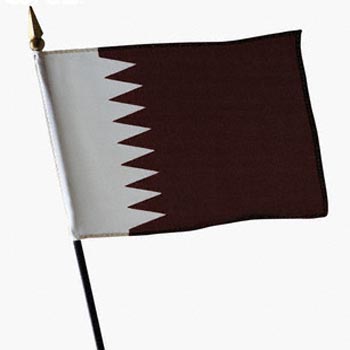Doha's Museum of Islamic Art - powerful, surprising simplicity
 Doha - There was incredulous murmuring among experts at first when the Arab Gulf states announced ambitious plans for art museums.
Doha - There was incredulous murmuring among experts at first when the Arab Gulf states announced ambitious plans for art museums.
The sheikhs, of all people, wanted to join the international elite of art connoisseurs and collectors in just a few years?
The very people who, swimming in petrodollars, had turned their villas and palaces into monuments of kitsch with gold faucets and walls hung with embroideries of Koranic suras and oil paintings of Arabian horses? What hubris to think artistic judgment can be bought!
But the money was enticing and the sheikhs were serious.
And soon, branches of New York's Guggenheim Museum and the Paris- based Louvre will open on an island in the emirate of Abu Dhabi.
The emirate of Dubai is building a Culture Village with arts and culture institutions.
Four months ago in Doha, capital of the emirate of Qatar, the first of the big new museums on the Gulf opened its doors: the Museum of Islamic Art. Imposing without being ostentatious, it presents itself to visitors as sober and minimalist.
The museum's charm lies not only in its collections but also in its surprising design, reminiscent of the minaret gracing Cairo's Ahmad ibn Tulun Mosque and the step pyramid at Egypt's ancient burial site of Saqqara.
Qatar's rulers succeeded in persuading the famous Chinese-born American architect I. M. Pei, now 91 years old, to build the museum, which stands on a man-made island off the coast of Doha.
Seen from the street, the building that Pei created is as sleek and solid as a modern fortress. From the water, though, it appears airy and delicate.
During the week, visitors are often few and far between in the museum's spacious galleries and corridors. But Fridays are usually quite busy.
The locals, tourists, and foreigners who live and work in Qatar walk over a bridge to reach the entrance or, to beat the heat, ride up from the car park in little white shuttle buses.
Many of the visitors are Muslims, like the Palestinian museum attendant in a dark headscarf who, on a recent sunny and mild Friday, was keeping an eye on things in a spotlighted gallery with historic editions of the Koran.
Almost all of the Muslims who visit the Museum of Islamic Art find something from their homeland, for example Ottoman tiles from the Turkish city of Iznik, 1,200-year-old relief art from Mesopotamia, daggers from India, precious carpets from Iran and Korans from Afghanistan.
The Qataris, who see the museum as "a bridge from past to future," have also gathered some artwork from the cultural zenith of Moorish Andalusia.
While Western connoisseurs of Islamic art are impressed by the collections, Westerners who are unfamiliar with - or cannot get used to - devout Muslims' idea of art and beauty will find the museum unappealing despite its spectacular architecture.
Owing to religious reservations that many Muslims had - and have - against depicting living creatures, Islamic art is often restricted to geometric forms, vegetal patterns and the use of precious stones and other valuable materials.
This is why even amusement parks in Riyadh, capital of the strict Muslim country of Saudi Arabia, lack figures of animals.
Doha's Museum of Islamic Art is not so rigid in rejecting such images, a practice stemming from Islam's prohibition of idolatry.
As the museum informas its visitors: "Many believe that figural representation is forbidden in the Islamic world.
"While it is true that the depiction of humans and animals is avoided in religious contexts such as mosques and in Qur'ans, much of Islamic art is for domestic or non-religious use.
"Here, the depiction of figures is seen continuously from the early Islamic times." www. mia. org. qa (dpa)